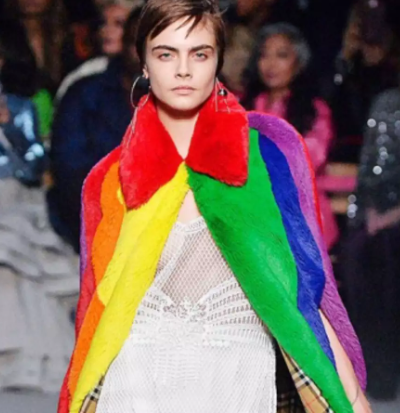
The fashion industry has traditionally been divided into men’s and women’s clothing, with strict guidelines on what is considered appropriate for each gender. However, in recent years, a new movement has emerged, challenging these traditional gender norms and promoting gender-neutral fashion. This trend is on the rise, with designers around the world creating clothing that can be worn by anyone, regardless of gender.
The Roots of Gender-Neutral Fashion
Gender-neutral fashion is not a new concept, but it has gained more attention in recent years due to the increasing conversation around gender identity and expression. The movement towards gender-neutral clothing started in the 1960s and 1970s when the feminist movement challenged the traditional gender roles and expectations associated with clothing. The androgynous look, with loose-fitting clothing and a lack of gender-specific styles, became popular as a way to challenge these norms.
In the 21st century, the conversation around gender identity and expression has become more visible, and gender-neutral fashion has become an important aspect of this conversation. Many individuals now identify as non-binary, genderqueer, or gender-fluid, and fashion designers are beginning to recognize the need for clothing that reflects these identities.
Designers Embracing Gender-Neutral Fashion
A growing number of designers are creating collections that are inclusive of all genders. For example, fashion house Gucci launched its genderless clothing line, “Gucci MX,” in 2020, featuring unisex pieces designed to be worn by all. Designer Harris Reed, who identifies as non-binary, has become a prominent figure in the gender-neutral fashion movement, creating clothing that challenges traditional gender norms and expectations.
Other designers have incorporated gender-neutral elements into their collections, such as oversized silhouettes, loose-fitting garments, and neutral color palettes. This trend has become especially popular in streetwear, with brands like H&M, Zara, and Uniqlo offering gender-neutral clothing lines.
Impact on the Industry
Gender-neutral fashion is changing the way we think about clothing and challenging the traditional gender norms that have long dominated the fashion industry. It is promoting inclusivity and diversity, allowing individuals to express themselves in a way that feels authentic to them.
The rise of gender-neutral fashion is also having an impact on the industry’s sustainability efforts. By creating clothing that can be worn by anyone, regardless of gender, designers are promoting the concept of clothing as a long-term investment. This approach encourages consumers to buy fewer pieces of higher quality, rather than disposable, fast fashion items that are quickly discarded.
Challenges and Criticisms
Despite the positive impact of gender-neutral fashion, there are still challenges and criticisms that the movement faces. Some individuals argue that gender-neutral clothing is not practical, with certain styles designed for specific body types. Others argue that the movement is a trend that will eventually fade away.
Additionally, some have criticized the lack of diversity in the gender-neutral fashion movement, with many of the designers and models still conforming to traditional beauty standards.
Conclusion
Gender-neutral fashion is on the rise, and it is challenging traditional gender norms and expectations associated with clothing. Designers are creating collections that are inclusive of all genders, promoting diversity, and sustainability in the industry. While there are challenges and criticisms, the movement towards gender-neutral fashion is an important step towards a more inclusive and diverse fashion industry









